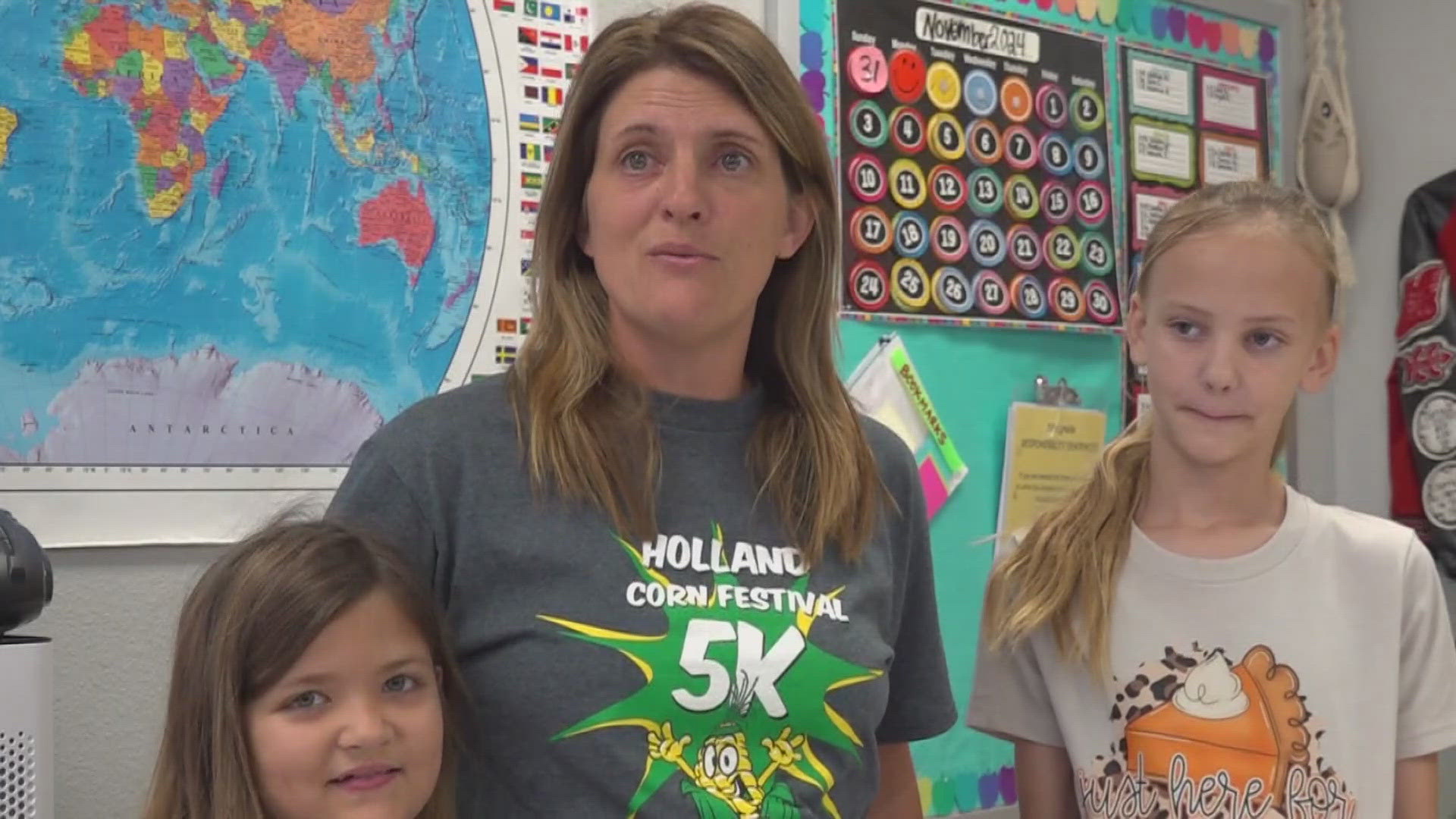KINGSTON, Jamaica — Hurricane Beryl was roaring by Jamaica Wednesday, bringing fierce winds and heavy rain after the powerful Category 4 storm earlier killed at least seven people and caused significant damage in the southeast Caribbean.
The U.S. National Hurricane Center said Beryl's eyewall was “brushing the south coast of Jamaica.”
Wind-whipped rain pounded the island for hours as residents heeded authorities' call to shelter until the storm had passed. Power was knocked out in much of the capital.
Prime Minister Andrew Holness said on Wednesday afternoon that nearly 500 people were placed in shelters.
By evening, he said that Jamaica has not seen the “worst of what could possibly happen.”
“We can do as much as we can do, as humanly possible, and we leave the rest in the hands of God,” Holness said.
Several roadways in the country’s interior settlements were impacted by fallen trees and utility poles, while some communities in the northern section were without electricity, according to the government’s information service.
Kingston resident Pauline Lynch said that she had stockpiled food and water in anticipation of the storm’s arrival. With wind already driving rain, Lynch said, “I have no control over what is coming so I just have to pray that all people of Jamaica is safe and we don’t suffer no deaths, no loss.”
By midday, winds already howled in the capital, turning the sea into churning whitecaps as Beryl's eye scraped by the island's southern coast.
“We are very concerned about a wide variety of life threatening impacts in Jamaica,” including storm surge, high winds and flash flooding, said Jon Porter, chief meteorologist at AccuWeather.
Porter called Beryl “the strongest and most dangerous hurricane threat that Jamaica has faced, probably, in decades.”
A hurricane warning was in effect for Jamaica, Grand Cayman, Little Cayman and Cayman Brac, and the coast of the Yucatan Peninsula of Mexico from Puerto Costa Maya to Cancun. Beryl was forecast to weaken slightly over the next day or two, but still be at or near major-hurricane strength when it passes near the Cayman Islands on Thursday and into Mexico's Yucatan Peninsula late Thursday or Friday, according to the U.S. National Hurricane Center.
Jamaica was under a state of emergency as the island was declared a disaster zone hours before the impact of Beryl. Holness said that the disaster zone declaration will remain for the next seven days.
An evacuation order was in place for communities across Jamaica that are prone to flooding and landslides. Holness urged Jamaicans to move away from low-lying areas.
Mexico’s Caribbean coast, meanwhile, was preparing for Beryl.
The head of Mexico’s civil defense agency said that Beryl is expected to make a rare double strike on Mexico. Laura Velázquez said the hurricane is expected to make landfall along a relatively unpopulated stretch of the Caribbean coast between Tulum and the inland town of Felipe Carrillo Puerto. Because the coast there is largely made up of lagoons and mangroves, there are few resorts or hotels in the area south of Tulum.
On Wednesday, Mexican government officials moved sea turtle eggs off Cancun beaches in an attempt to protect them from storm surge.
The hurricane is expected to weaken to a tropical storm as it crosses the Yucatan peninsula and reemerge over the weekend at storm strength into the Gulf of Mexico. Velázquez said that Beryl is then expected to hit Mexican territory a second time in the Gulf coast states of Veracruz or Tamaulipas, near the Texas border.


Late Monday, Beryl became the earliest storm to develop into a Category 5 hurricane in the Atlantic and peaked at winds of 165 mph (270 kph) Tuesday before weakening to a still-destructive Category 4. On Wednesday, the storm's center was about 100 miles (160 kilometers) west of Kingston. It had maximum sustained winds of 130 mph (215 kph) and was moving west-northwest at 20 mph (31 kph). Hurricane strength winds extended 45 miles from the center.
In Miami, hurricane center director Michael Brennan in an online briefing said people on the island should plan to stay sheltered throughout the day Wednesday with conditions only beginning to improve overnight.
Jamaica’s southern coast, where Kingston is located, was expected to bear the brunt of Beryl with coastal water levels rising to 6 or 9 feet (1.8 to 2.7 meters) above normal tide levels in some area.
Heavy rains of 4 to 8 inches, with up to a foot in isolated areas, threatened flash flooding and mudslides on the mountainous island, he said.
As Beryl barreled through the Caribbean Sea, rescue crews in southeastern islands fanned out to determine the extent of the damage the hurricane inflicted on Carriacou, an island in Grenada.
Michelle Forbes, the St. Vincent and Grenadines director of the National Emergency Management Organization, said that about 95% of homes in Mayreau and Union Island have been damaged by Hurricane Beryl.
Three people were reported killed in Grenada and Carriacou and another in St. Vincent and the Grenadines, officials said. Three other deaths were reported in northern Venezuela, where five people are missing, officials said. About 25,000 people in that area also were affected by heavy rainfall from Beryl.
One fatality in Grenada occurred after a tree fell on a house, Kerryne James, the environment minister, told The Associated Press.
Grenada's Prime Minister Dickon Mitchell said Tuesday there was no power, roads are impassable and the possible rise of the death toll “remains a grim reality.”
St. Vincent and the Grenadines Prime Minister Ralph Gonsalves has promised to rebuild the archipelago.
The last strong hurricane to hit the southeast Caribbean was Hurricane Ivan 20 years ago, which killed dozens of people in Grenada.



